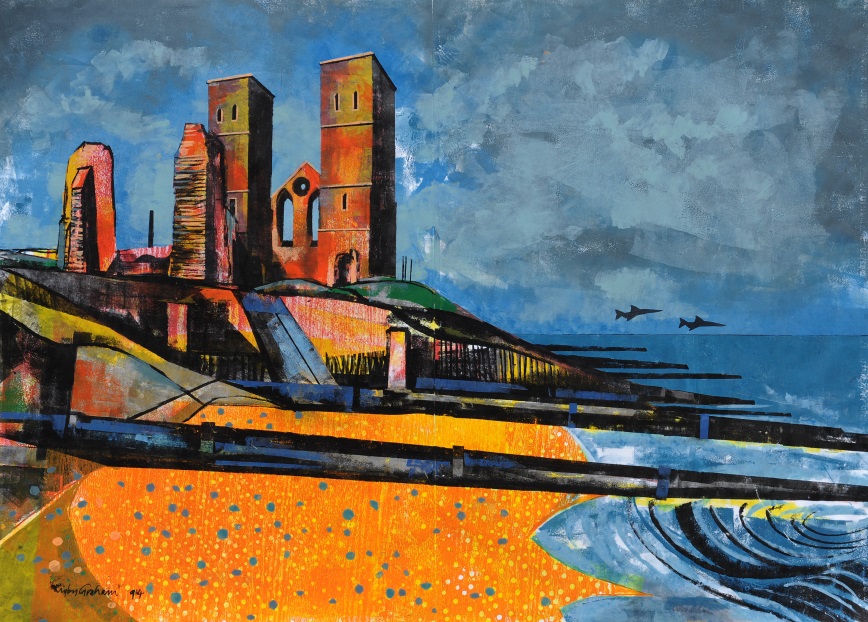Reculver, 1994
Rigby Graham, MBE (1931-2015)

The imposing twin towers of the medieval church at Reculver dominate the skyline of Herne Bay on the North Kent coast. This was the site of one of the earliest Roman forts built against Saxon raids on the Thames Estuary in the first century AD.
A Saxon church was built here in 669 AD after the Roman fort had fallen into disuse, reusing the existing defences, and the church of St Mary was built near the centre of the earlier fort. Documentary evidence suggests that the site had ceased to function as a monastic house by the 10th century, after which time the church became the parish church of Reculver. Remodelling of the church in the 12th century included the addition of the twin towers that remain.
Rigby Graham’s topographical subjects, like John Piper’s, often included ruined churches. Unlike John Piper, however, Rigby Graham often included contemporary references such as the fighter jets included here on their way to Iraq to take part in the First Gulf War (Jan-Feb 1991)
The painting offers a poignant image of the passage of time. The way in which successive civilisations build one upon another is present in the re-use of Roman tiles to build the medieval church, itself now redundant. The community once served by this church has moved to a higher site and the whole site is subject to coastal erosion, a reminder of the forces of nature.
In some ways the painting is an image of an old civilisation succumbing to the march of time but the fighter jets are a reminder of the continuing impact of decisions made in these islands upon other civilisations and raise uncomfortable moral questions about the use of force, about the motives for war and about the consequences of Allied interventions in the Middle East in the 1990s that helped to shape the current political context.
The vibrant colours and strong lines of this painting, however, still speak of life and definition and hope even in the context of decay, chaos and destruction.
The work is on loan to the college.



